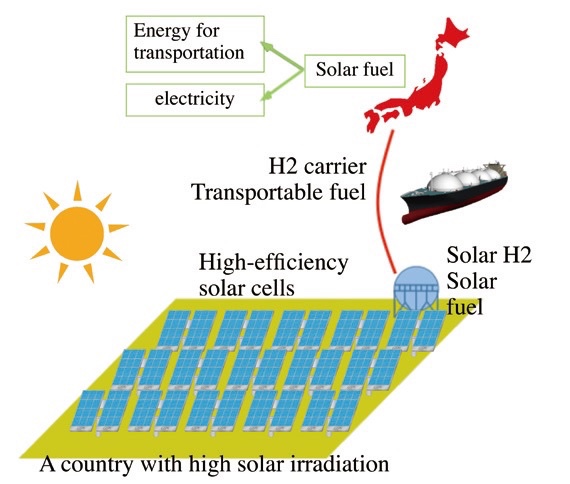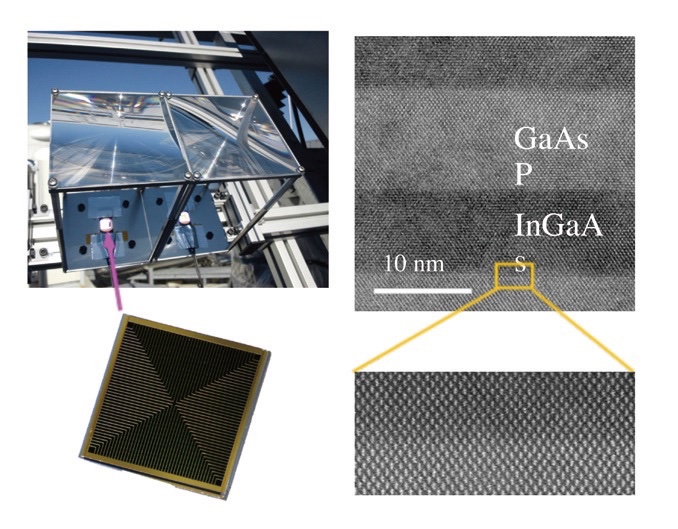

Enoah:“儲氫系統”的優勢
-價格可以降到一半以下-
儲氫系統:
由 Enoah 和東京大學開發的儲氫系統。
用太陽能發電
電解產生的氫氣儲存在罐中,
使用燃料電池恢復電力的機制。
Enoah(愛知縣豐田市)
東京大學 Masakazu Sugiyama 教授
我們開發了一種“利用太陽能發電產生並儲存氫氣的儲存系統”。
半價以下:
通過結合市售產品
來自主要製造商開發的設備
價格可以降到一半以下。
部署廉價的系統並導致中小型企業的脫碳。
新開關
豐田通商加強氫燃料電池相關業務…投資Enoa
| 回應
https://response.jp/article/2021/04/14/344945.html
Enoah Inc. -燃料電池/真空絕緣-
| 首頁-Enoa Co., Ltd.
Enoah : Avantages du “Système de Stockage d’Hydrogène”
-Le prix peut être réduit à moins de la moitié-
Système de stockage d’hydrogène :
Un système de stockage d’hydrogène développé par Enoa et l’Université de Tokyo.
Avec l’énergie produite par l’énergie solaire
L’hydrogène produit par électrolyse est stocké dans un réservoir,
Un mécanisme de retour à l’énergie électrique avec une pile à combustible.Enoah (ville de Toyota, préfecture d’Aichi)
Professeur Masakazu Sugiyama, Université de TokyoNous avons développé un “système de stockage qui crée et stocke de l’hydrogène à partir de l’électricité obtenue à partir de la production d’énergie solaire”.
Moins de la moitié du prix :
En combinant des produits disponibles dans le commerce
Du matériel développé par un grand constructeur
Le prix peut être réduit à moins de la moitié.Déployer un système peu coûteux et conduire à la décarbonation des petites et moyennes entreprises.
Nouvel interrupteur
Toyota Tsusho renforce son activité liée aux piles à combustible à hydrogène … investit dans Enoa
| RéponseEnoah Inc. -Pile à combustible / Isolation sous vide-
| Accueil-Enoa Co., Ltd.
Enoah: Vorteile des „Wasserstoffspeichersystems“
-Der Preis kann auf weniger als die Hälfte reduziert werden-
Wasserstoffspeichersystem:
Ein von Enoa und der Universität Tokio entwickeltes Wasserstoffspeichersystem.
Mit Strom aus Sonnenkraft
Durch Elektrolyse erzeugter Wasserstoff wird in einem Tank gespeichert,
Ein Mechanismus zur Rückkehr zur elektrischen Energie mit einer Brennstoffzelle.Enoa (Toyota City, Präfektur Aichi)
Professor Masakazu Sugiyama, Universität TokioWir haben ein „Speichersystem entwickelt, das aus dem aus der Solarstromerzeugung gewonnenen Strom Wasserstoff erzeugt und speichert“.
Weniger als der halbe Preis:
Durch die Kombination handelsüblicher Produkte
Von Geräten, die von einem großen Hersteller entwickelt wurden
Der Preis kann auf weniger als die Hälfte reduziert werden.
Stellen Sie ein kostengünstiges System bereit und führen Sie zur Dekarbonisierung kleiner und mittlerer Unternehmen.Neuer Schalter
Toyota Tsusho stärkt das Geschäft mit Wasserstoff-Brennstoffzellen … Investiert in Enoa
| AntwortEnoah Inc. -Brennstoffzelle / Vakuumisolierung-
| Startseite-Enoa Co., Ltd.
ergy System Sugiyama Laboratory
High-efficiency photovoltaic and chemical energy storage
Solar energy can take a majority of energy supply in our society
if we can realize an energy system in which solar energy is stored in chemical substances in the regions with high irradiance and they are transported to the region of large energy demand.
For such a system,
it is promising to combine high efficiency photovoltaic (PV) power generation and electrochemical reactionsto produce solar fuel, which is capable of long-term storage and transport.
Our objective is to develop high efficiency PV cells and electrochemical reactors
which are included in the system to produce “solar fuel.”
The core competence is semiconductor nano-crystals.
PV can be twice as efficient as conventional technology
by implementing the epitaxial nanostructures of compound semiconductor crystals into the modules with sunlight concentration.
Our laboratory
develops all the relevant technologies from the growth of nano-crystals to system evaluation.RCAST
https://www.rcast.u-tokyo.ac.jp/en/research/sugiyama_lab.html